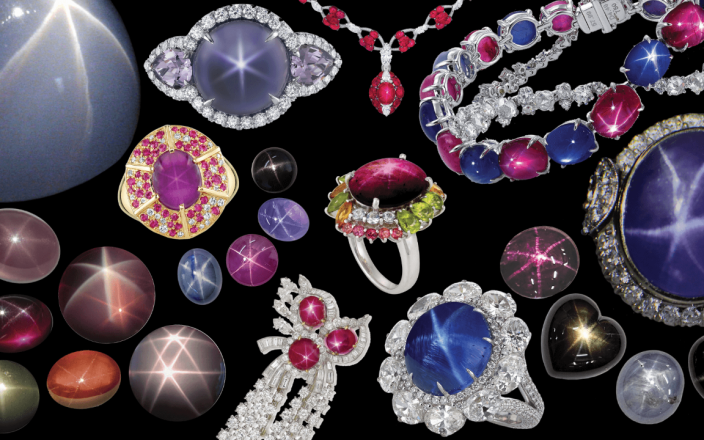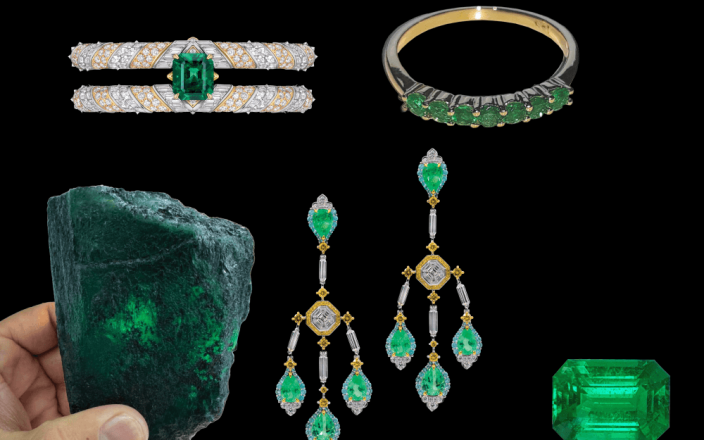With its captivating blue and blue-green hues that mirror the serene waters of the sea, turquoise has been revered for centuries as a symbol of beauty, protection, wisdom, and its purported magical powers. “Its use can be traced back to around 3000 BC,” says antique jewellery specialist Ioannis Alexandris, chief executive officer of Gemolithos, adding that the bright gem was held in high esteem by ancient cultures in Egypt, Greece, China, the early Americas, and Persia.
In more recent eras, influential pieces of turquoise jewellery could be found “in almost all royal collections, including the French and other European Crown Jewels, the Imperial House of Pahlavi, the Russian Czars, and more,” Alexandris explains. “Brands such as Van Cleef & Arpels, Cartier, Tiffany, and Bulgari crafted spectacular tiaras and other jewels using turquoise for royals, socialites, and celebrities around the world.”
As a unique gemstone, turquoise forms in arid regions where copper-rich water percolates through rocks, creating a chemical reaction resulting in the formation of the gem’s deposits. Its blue and green colours are due to the copper in the gem’s mineral structure.
Turquoise is sourced from various regions globally, each offering its own distinctive characteristics. The largest producer is China, supplying some 80 percent of the market, according to Jacob Lowry, executive director of the Turquoise Museum in Albuquerque, New Mexico. He adds that Mexico is second, with the USA in third place.
The American southwestern states of Arizona, New Mexico, Colorado, and Nevada have been prominent sources of turquoise for centuries, first mined by pre-Columbian civilisations. Known for their vivid blue and blue-green colour, gems from these areas have their own distinguishing inclusions and matrix patterns. Bisbee Turquoise is considered the rarest of all, and Sleeping Beauty Turquoise, both from Arizona, are in high demand, as is Lander Blue Spiderweb Turquoise from Nevada.
Mexico has several deposits around the country, with gems in vibrant colours, ranging from pure blue to greenish blue. Some Mexican turquoise exhibits a spiderweb matrix pattern, adding to its uniqueness.
With mines dating back to 1700 BC, China produces gems known for their varying shades, including bright blue and greenish blue, with intricate veining. Persian turquoise has been mined since the tenth century, although its discovery may date back further. These gems are highly esteemed for their robin’s egg blue colour and minimal matrix and were favoured stones of Persian royalty. Today, Persian turquoise is still highly sought after by collectors.
Other sources of turquoise include Afghanistan, Australia, Egypt, Siberia, and Tibet. Each has individual charm, making turquoise a versatile gemstone in the fine jewellery sector. While Australian turquoise is relatively rare, some deposits are on Indigenous land in the Northern Territory.
Whether drawn to its cultural significance, aesthetic appeal, or spiritual attributes, turquoise has captivated the jewellery world. Prized by those who appreciate its natural beauty and unique appearance, it is truly an alluring gem with a rich history.
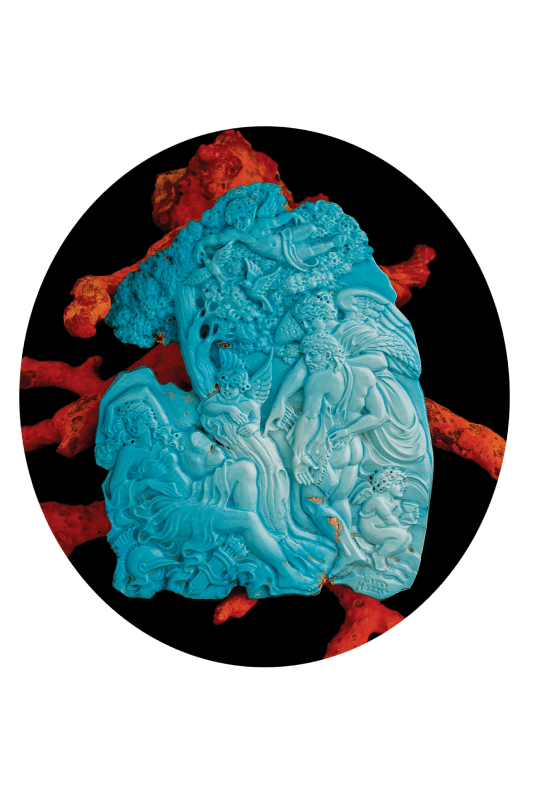
Natural Sleeping Beauty Turquoise from Arizona, hand-carved by Mazzo Ciro (Italy), featuring the epic story of Hercules and Deianira, 4 x 3.25 inches, on display at the Turquoise Museum, Albuquerque, New Mexico. (Photo: Turquoise Museum)
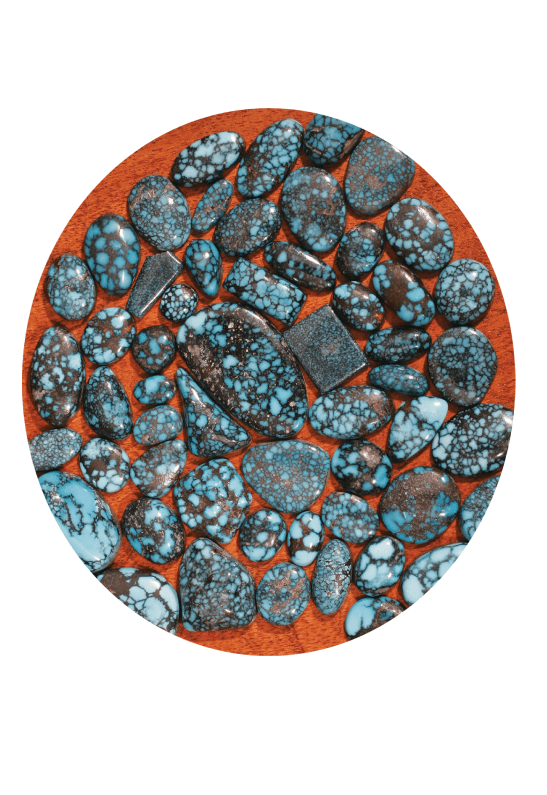
Grouping of natural Yungaisi Turquoise from China. (Photo: Turquoise Museum)
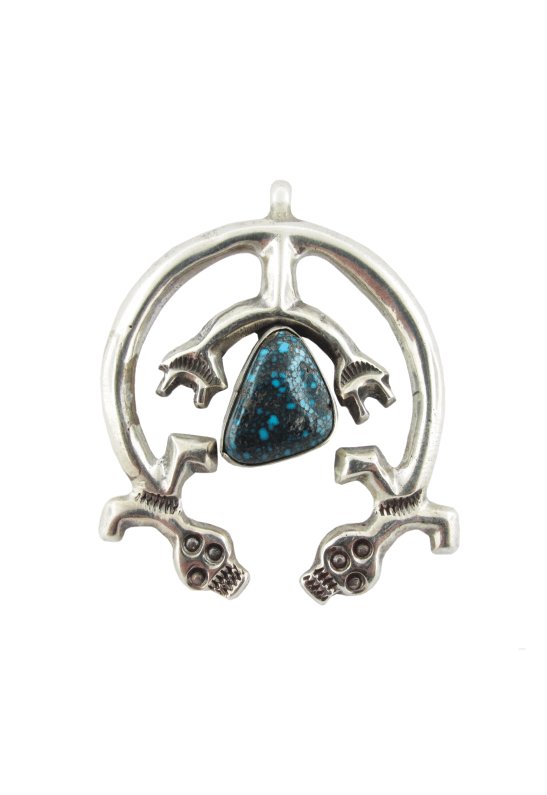
Lander Blue Spiderweb Turquoise (Nevada), set in silver. (Photo: Dwight Schannep)
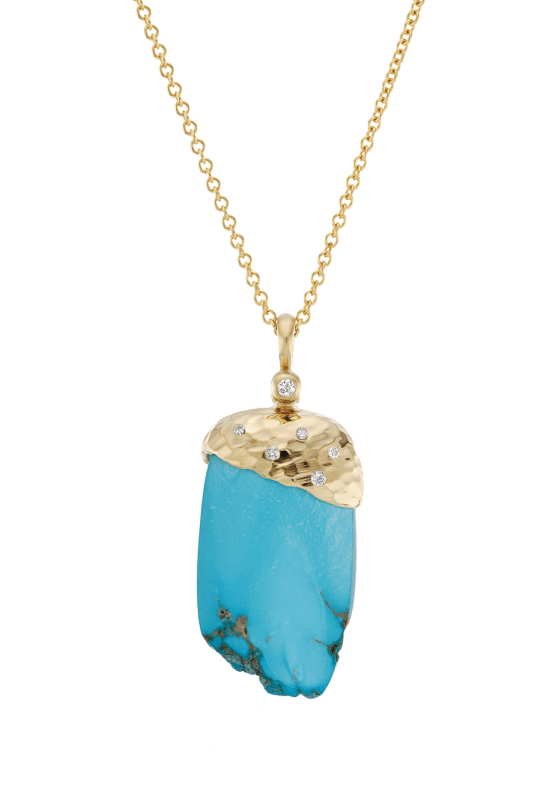
Pendant featuring Sleeping Beauty Turquoise (Arizona) set in 18K Fairmined gold with diamonds by Dana Bronfman. (Photo: Dana Bronfman)

Kingman Turquoise cabochon (Arizona) accentuates a finely granulated casting of weather-worn burl wood in recycled silver by Jenn Dewey. (Photo: AMULET Arts)
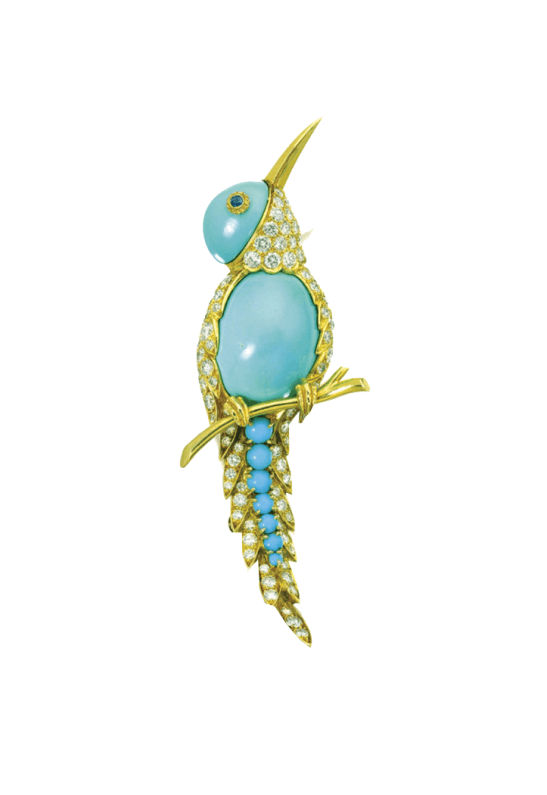
Turquoise and diamond Bird brooch in 18K gold by Van Cleef & Arpels. (Photo: Sotheby’s)
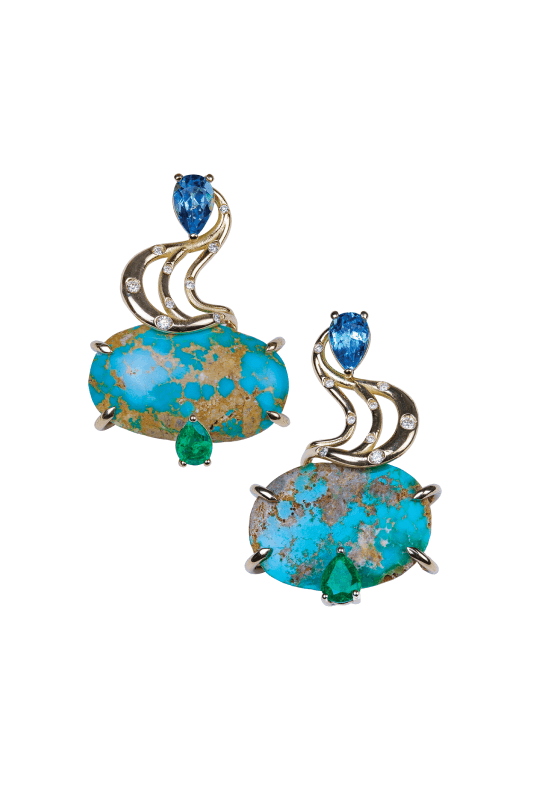
Persian turquoise, emerald, sapphire, and diamond earrings in 18K gold by Caroline C. (Photo: Caroline C)
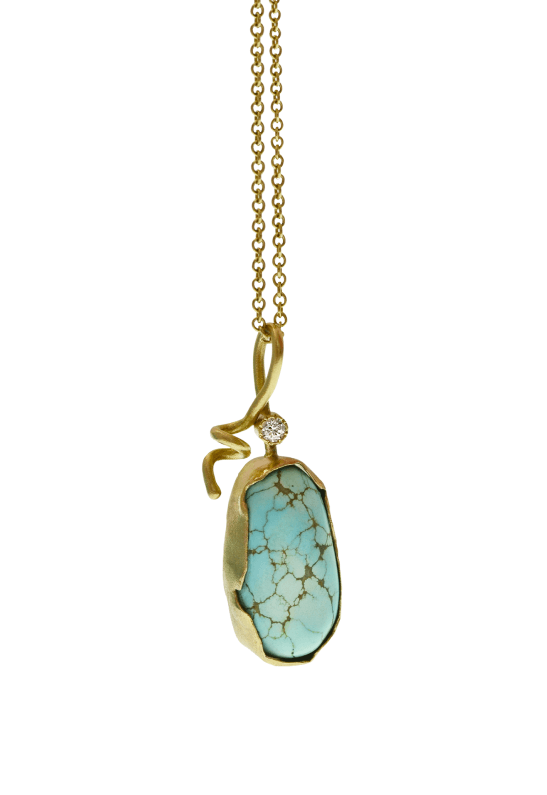
Pendant featuring Nevada-mined and cut turquoise set in 14K recycled gold and diamond by Susan Crow. (Photo: Susan Crow)
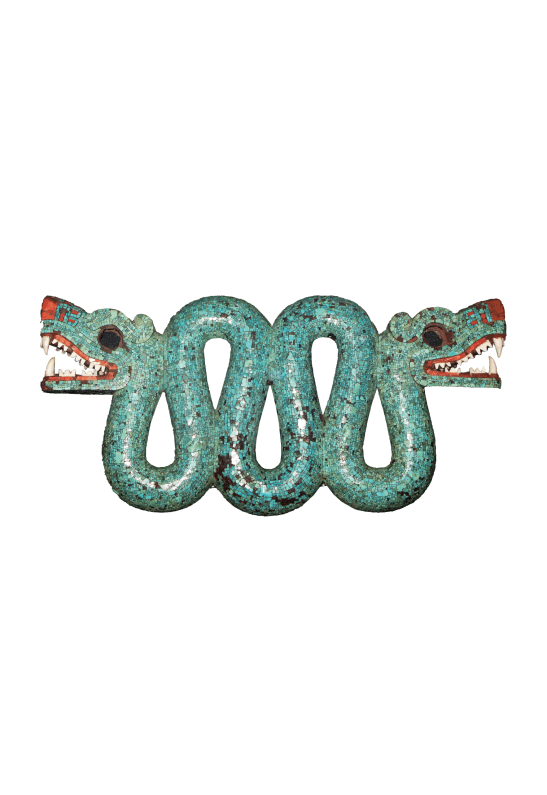
Aztec double-headed serpent chest ornament with 15,000 turquoise mosaics covering a wooden base, with spiny oyster and conch shell, 15th century, in the British Museum. (Photo: Geni, CC BY-SA 4.0, Wikimedia Commons)
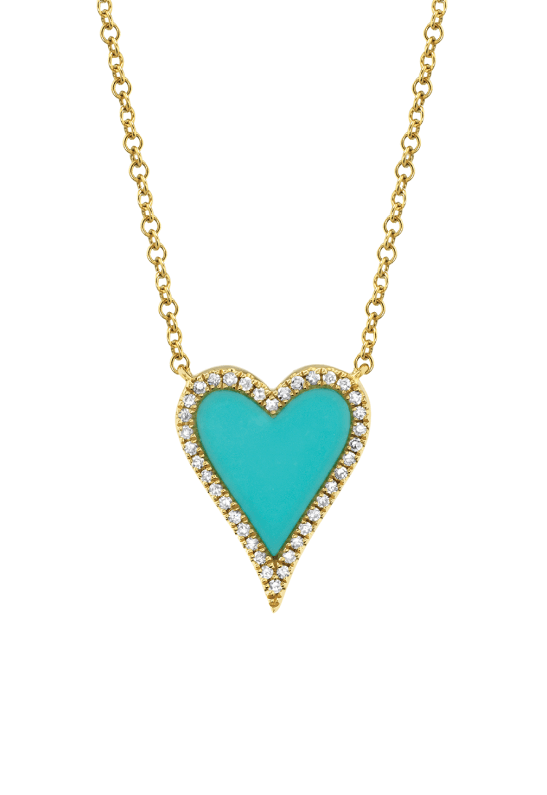
Composite turquoise and diamond heart necklace by Shy Creation. (Photo: Shy Creation)
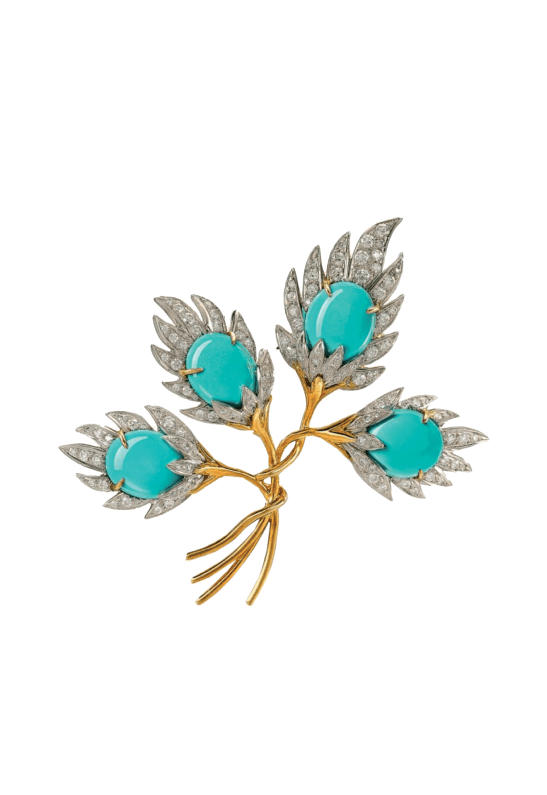
Turquoise and diamond brooch by Schlumberger for Tiffany & Co. (Photo: Sotheby’s)
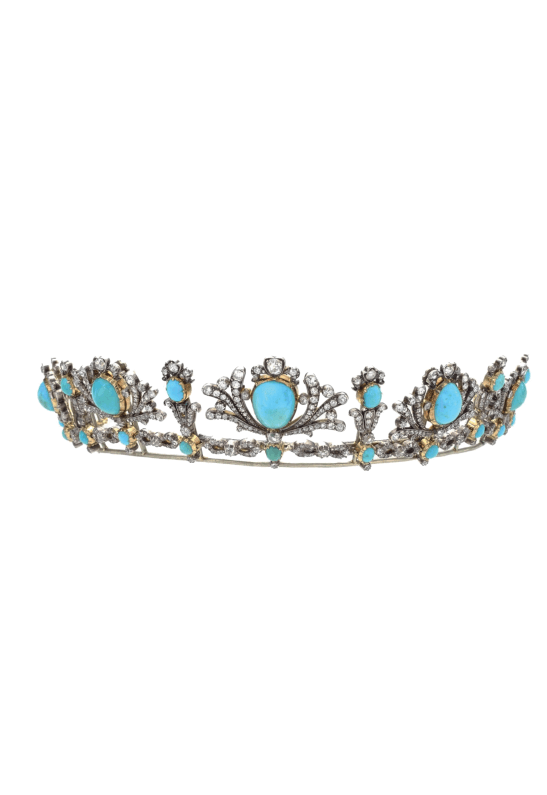
Turquoise and diamond tiara, circa 1830. (Photo: Sotheby’s)

Turquoise, amethyst, and diamond orchid brooch by Cartier, circa 1960. (Photo: Sotheby’s)
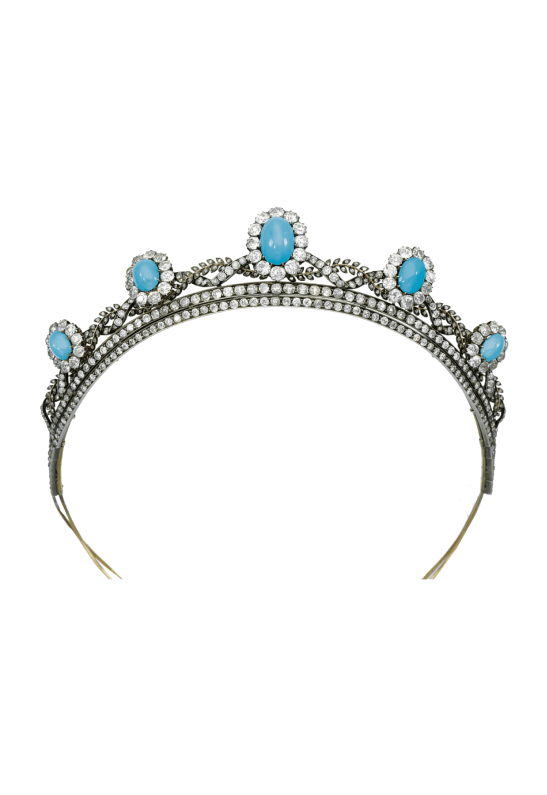
Turquoise and diamond tiara, 1880s, in silver and gold. (Photo: Sotheby’s)
